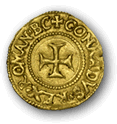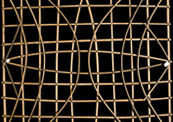Class
Archive
archive:
a repository or collection,
especially of information.
from Latin archivum,
from Greek archeion


The Ships
Of Columbus
Replicas of the Niña and the Pinta
Navigate All the Way to Northern Alabama.
November 2, 2010
The three ships from Columbus’s first voyage to the Americas are among the most famous ships in history. The names of the Niña, Pinta, and Santa Marie are as well known as the Titanic, the Bismarck, Old Ironsides for Americans, or the Victory for the British. Reading the names in a book, looking at pictures, or seeing the ships in a movie requires a great leap of imagination to understand what Columbus and his crew experienced crossing the ocean. To help cross the divide between imagination and reality, people over the ages have built various replicas of the ships of Columbus.

Chocolate:
Food of the Gods.
Tracing the Path of an Ancient Olmec
Delicacy All the Way to Hershey's Kisses.
October 22, 2010
Chocolate is one of the pleasures of modern life. Enjoying a chocolate bar, a nice cup of hot chocolate, devil’s food cake, or some Hershey’s Kisses are very therapeutic activities for many people. We might even know these people as chocoholics. We might well be chocoholics ourselves! Inexpensive, mass produced chocolate is a phenomenon of the mid-nineteenth century and the Industrial Revolution. That western society has chocolate at all is a product of the Age of Discovery and its Columbian Exchange of plants and animals.

John Cabot, Explorer
A Tale of a Forgotten Man
and a Book N'er Published.
October 14, 2010
John Cabot is one of those figures whose appearance on the stage of history presents a stirring drama starring a character whose nature is never fully revealed, leaving posterity with some knowledge about significant episodes in their career while hiding their complete life story in obscurity. Ron Fritze's study of how Cabot is viewed by history depicts an explorer whose voyages were neglected or ignored in most accounts of the Age of Discovery. Then, when he was rediscovered by a historian in the second half of the 20th century, the text telling his story was destroyed before it could see publication.

Maya Fantasies
How Two Well-Intentioned Archaeologists
Mangled the Origins of History.
September 14, 2010
Augustus Le Plongeon (1826-1908) was a controversial pioneer archaeologist who primarily worked on the Maya ruins of Uxmal and Chichen Itza in the Yucatan peninsula of Mexico during the 1870s and early 1880s. He and his wife Alice Dixon (1851-1910) accomplished much useful archaeological fieldwork, but their theory that the Maya were the originators of all human civilization, including Egypt and Atlantis, brought them into disrepute with the rest of the emerging archaeological profession.

The Shock of the Strange
and the New.
"To Boldly Go
Where No Man
Has Gone Before."
August 24, 2010
To the people of the fifteenth century, the Planet Earth consisted of three continents: Africa, Asia, and Europe. The lineages of all humans were laid out in the book of Genesis in the Bible. All people were seen as descendants of Adam and Noah. But Christopher Columbus shattered this long-held worldview by revealing the existence of two unknown continents, which were inhabited by humans who did not fit into the Biblical narrative. And the task of absorbing the knowledge of new worlds and new peoples was a monumental task for Europeans. It was a shock.
Christopher Columbus and the Great Age of Discovery
HIST 351 ~ Fall 2010
Christopher Columbus and the Age of Discovery
is an internet learning resource directed by Dr. Ronald Fritze,
Dean of the College of Arts and Sciences
at Athens State University in Athens, Alabama.
The Age of Discovery web project
is part of the CornDancer family
of open-access, non-commercial, developmental websites. |

